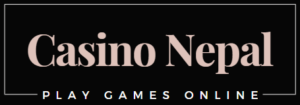In today’s digital age, the concept of 무료중계 (free broadcast) has emerged as a pivotal force in reshaping the landscape of media consumption. 무료중계 refers to the dissemination of content—be it news, entertainment, or educational materials—without charge to the viewer. As technology evolves, the traditional barriers to accessing information have diminished, paving the way for a more inclusive and democratized media environment. This article explores the significance of 무료중계, its implications for society, and the future it promises for content creators and consumers alike.
The significance of free broadcast lies in its ability to provide equal access to information for all individuals, regardless of their socio-economic status. In the past, access to quality media often required financial investment, such as subscriptions to cable networks or streaming services. However, free broadcast platforms, including online streaming sites and community radio stations, have broken down these barriers. This transformation is especially vital in underprivileged communities where access to information can directly influence educational opportunities and civic engagement. By democratizing media, free broadcast empowers individuals to make informed decisions about their lives and their communities.
Another crucial aspect of free broadcast is its potential to diversify the voices that are heard in the media landscape. Traditional media outlets have often been criticized for their narrow perspectives, which tend to reflect the views of a limited demographic. Free broadcast allows independent creators, grassroots organizations, and minority groups to share their stories and perspectives without the constraints imposed by commercial interests. This increase in diversity not only enriches the media content available to audiences but also fosters a more inclusive society where various narratives can coexist and be heard.
Moreover, free broadcast plays a significant role in the dissemination of crucial information during times of crisis. Events such as natural disasters, political upheaval, or public health emergencies demand timely and accurate information. In such scenarios, free broadcast platforms, including social media and live-streaming services, can quickly deliver updates to the public without the delay often associated with traditional media. This immediacy is crucial for ensuring that communities stay informed and can respond effectively to evolving situations. The role of free broadcast in crisis communication highlights its importance as a tool for public service and social responsibility.
As we delve deeper into the implications of free broadcast, it’s essential to consider the impact of technology on this medium. The advent of the internet and mobile devices has revolutionized how content is produced and consumed. With the rise of user-generated content, anyone with a smartphone can become a broadcaster. This shift has resulted in a surge of diverse content that appeals to niche audiences. Free broadcast platforms have enabled this transformation, providing the infrastructure for creators to share their work without traditional gatekeeping. Consequently, this democratization of content creation has not only enriched the media landscape but has also challenged established media organizations to adapt to a more competitive and rapidly evolving environment.
However, while the advantages of free broadcast are evident, there are also challenges that must be addressed. The proliferation of content can lead to information overload, making it difficult for consumers to discern credible sources from unreliable ones. Misinformation can spread quickly on free broadcast platforms, posing risks to public discourse and trust in media. Therefore, fostering media literacy is essential for audiences to navigate this new landscape effectively. Encouraging critical thinking and providing resources to help individuals identify credible information will be vital as free broadcast continues to grow.
In conclusion, free broadcast represents a transformative shift in how media is accessed and consumed. It offers unprecedented opportunities for diverse voices to be heard, enhances the accessibility of information, and plays a critical role in times of crisis. However, with these advantages come challenges that society must address to ensure the responsible consumption of media. As technology continues to evolve, the potential of free broadcast to shape the future of media remains immense, promising a more inclusive and informed society. The path ahead will require collaboration among content creators, consumers, and educators to maximize the benefits of this new era in broadcasting while mitigating its risks. Embracing free broadcast is not just about enjoying accessible content; it is about fostering a more equitable and engaged public sphere for all.
